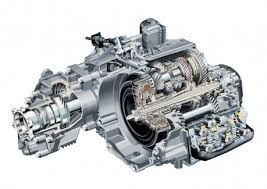Mobile:+86-311-808-126-83
Email:info@ydcastings.com
what does die casting mean
Understanding Die Casting A Comprehensive Overview
Die casting is a manufacturing process that involves forcing molten metal into a mold cavity under high pressure. This method is widely used in industrial production for creating complex shapes and high-precision metal components. The precision, surface finish, and mechanical properties of die-cast products make this technique a popular choice in various industries, including automotive, aerospace, electronics, and consumer goods.
The Die Casting Process
The die casting process begins with the preparation of the molten metal, which can be made from various alloys, including aluminum, zinc, magnesium, and copper. Once the metal reaches its melting point, it is poured into the die casting machine where it is injected into a precision-crafted mold at high pressure. The speed and pressure involved in this process help to ensure that the metal fills all parts of the mold, reducing the risk of defects and ensuring dimensional accuracy.
The die itself is usually made from hardened steel and consists of two halves the moving half and the fixed half. The design of these molds is critical, as even a slight imperfection can lead to product defects. After injection, the metal quickly cools and solidifies within the mold, after which the die opens, and the cast part is ejected. The cycle time for die casting can vary but typically ranges from a few seconds to a couple of minutes, enabling high-volume production.
Advantages of Die Casting
One of the primary advantages of die casting is the excellent dimensional accuracy it provides. Parts produced via this method can achieve tolerances as tight as ±0.1 mm, making it ideal for applications requiring precise specifications. Furthermore, die-cast components often exhibit a superior surface finish, which can significantly reduce or eliminate the need for secondary machining processes. This efficiency not only saves time but also reduces overall manufacturing costs.
Moreover, die casting allows for the production of complex geometries that may be difficult or impossible to achieve using other manufacturing methods. This flexibility can lead to innovative product designs that are both functional and aesthetically pleasing. Additionally, the process produces relatively lightweight components, making it particularly advantageous in sectors like automotive manufacturing, where reducing vehicle weight can enhance fuel efficiency and performance.
what does die casting mean

Limitations of Die Casting
While die casting has many advantages, it is not without its limitations. The initial costs for designing and manufacturing the die can be high, making it more economically viable for large production runs. For low-volume production, other methods such as sand casting or investment casting may be more cost-effective. Additionally, the types of materials that can be used in die casting are somewhat limited, primarily focusing on non-ferrous metals.
Another consideration is the potential for porosity in castings, which can affect the mechanical properties and performance of the final product. To mitigate these issues, thorough inspection and quality control measures are essential during the production process.
Applications of Die Casting
Die casting is employed across a range of industries due to its adaptability and efficiency. In the automotive sector, it is used for manufacturing parts such as engine blocks, transmission cases, and structural components. In electronics, die casting helps produce housings and heat sinks that require precise dimensions and high thermal conductivity. Additionally, consumer products like kitchen appliances and hardware fittings often rely on die casting for their durability and aesthetic appeal.
Conclusion
In conclusion, die casting is a critical manufacturing process that yields precise, efficient, and high-quality metal components. Its advantages make it a preferred choice in various industries, although it does require careful consideration of costs and material limitations. As technology continues to advance, die casting is likely to evolve further, unlocking new opportunities for innovation and efficiency in manufacturing.
-
Why Should You Invest in Superior Pump Castings for Your Equipment?NewsJun.09,2025
-
Unlock Performance Potential with Stainless Impellers and Aluminum End CapsNewsJun.09,2025
-
Revolutionize Your Machinery with Superior Cast Iron and Aluminum ComponentsNewsJun.09,2025
-
Revolutionize Fluid Dynamics with Premium Pump ComponentsNewsJun.09,2025
-
Optimizing Industrial Systems with Essential Valve ComponentsNewsJun.09,2025
-
Elevate Grid Efficiency with High-Precision Power CastingsNewsJun.09,2025











